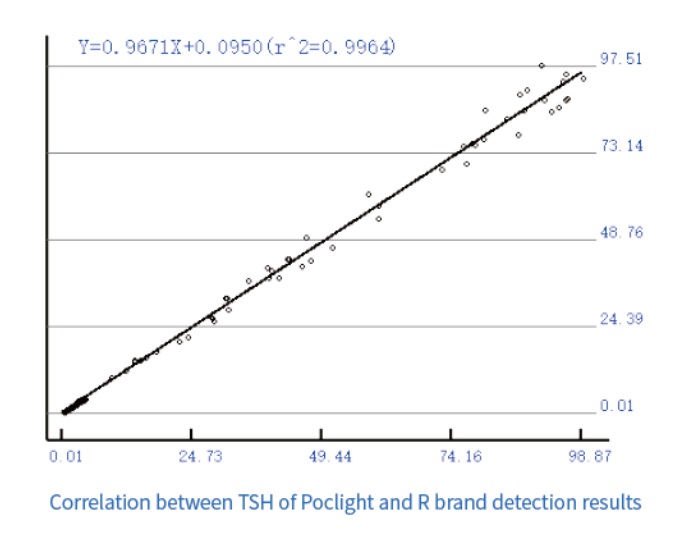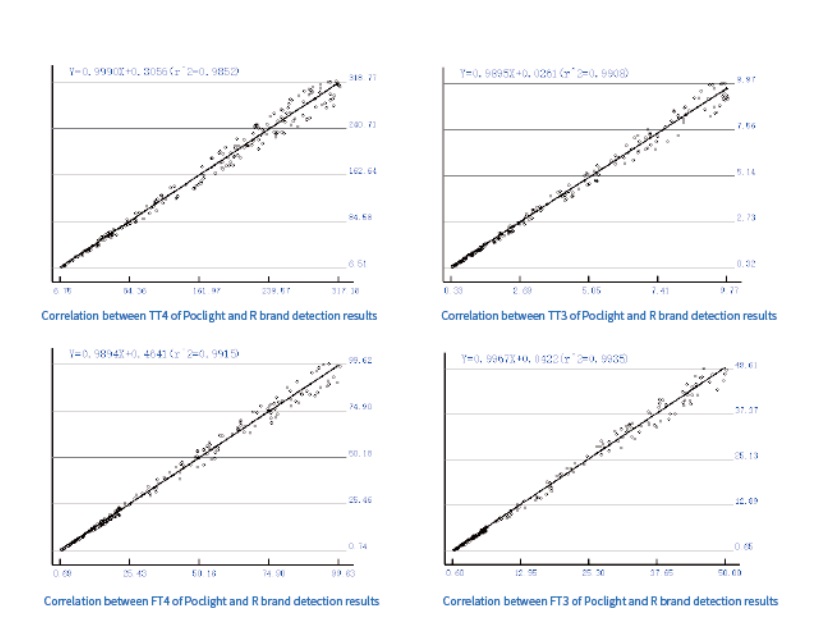What is homogeneous immunoassay method?
Homogeneous chemiluminescence is an important milestone in chemiluminescent immunoassay, enabling direct chemiluminescent detection without the need for separation and washing steps. It has garnered significant attention and wide application in various fields such as basic medical research, serum biomarker detection, and drug screening.
In order to improve the coverage and quality of medical services and strengthen the diagnostic capabilities of grassroots medical institutions, the development of small, convenient, rapid, and simple-to-operate point-of-care testing (POCT) technology platforms have promising application prospects. Homogeneous chemiluminescence technology, characterized by homogeneous reactions and no-wash features, perfectly matches the development requirements of automated and portable POCT testing instruments. In the IVD field, homogeneous chemiluminescence technology not only ensures the accuracy, reliability, and efficiency comparable to magnetic particle chemiluminescence but also meets the requirements of emergency testing. Compared to the commonly used fluorescence immunoassay technology in current POCT testing, homogeneous chemiluminescence offers advantages such as high throughput, low background, good repeatability, high sensitivity, and wide detection range, making it an ideal alternative technology.
Principle of Chemiluminescence Resonance Energy Transfer (CRET)
Based on homogeneous chemiluminescence, the detection substance binds with the labeled acridinium ester DNA antibody to form an immune complex. Graphene oxide quenches the remaining acridinium ester-labeled DNA fragments (eliminating the separation and washing process). Under the action of the excitation solution, a chemiluminescence reaction occurs.
Homogeneous chemiluminescence VS. Fluorescence immunochromatography
- High Precision:
In fluorescence immunoassays (FIA), the sample first passes through a binding pad and undergoes capillary chromatography, then reacts with antibodies fixed on the detection line, which is non-liquid phase and may lead to incomplete reaction and poor reproducibility of results. In contrast, in homogeneous CLIA detection, the sample reacts with the detection reagent in a homogeneous system immediately after addition, resulting in a simple and complete reaction process with higher precision.
- High Sensitivity:
Homogeneous CLIA technology employs a reaction with Graphene-Oxide, which enhances the interference resistance ability and sensitivity due to no-wash feature.
- High Throughput:
Homogeneous CLIA reactions are rapid, leading to fast detection speeds, and eliminate the need for washing steps. This allows instruments to operate without setting up a liquid system, enabling fully automated operations. Compared to FIA, homogeneous CLIA offers higher detection throughput.
Assay Performance:
Comparison between homogeneous CLIA and Magnetic particle chemiluminescence


About Poclight Biotechnology:
We focusing on the development of in vitro medical diagnosis (IVD) platform. We have R&D and production site of 5,000m2, including more than 3,700m2 of GMP workshops of 10,000 level and 100,000 level.
Relying on the patent platform of "Chemiluminescence Resonance Energy Transfer (CRET)" independently developed by Poclight Biotechnology, our company has developed a number of homogeneous chemiluminescence immunoassay products, covering clinical medicine, animal medicine, drug detection and other fields, with the characteristics of "precision, accuracy, low cost, rapid, small and excellent". Adhering to the Philosophy of "innovation,convergence, concentration, win-win".
评论
发表评论